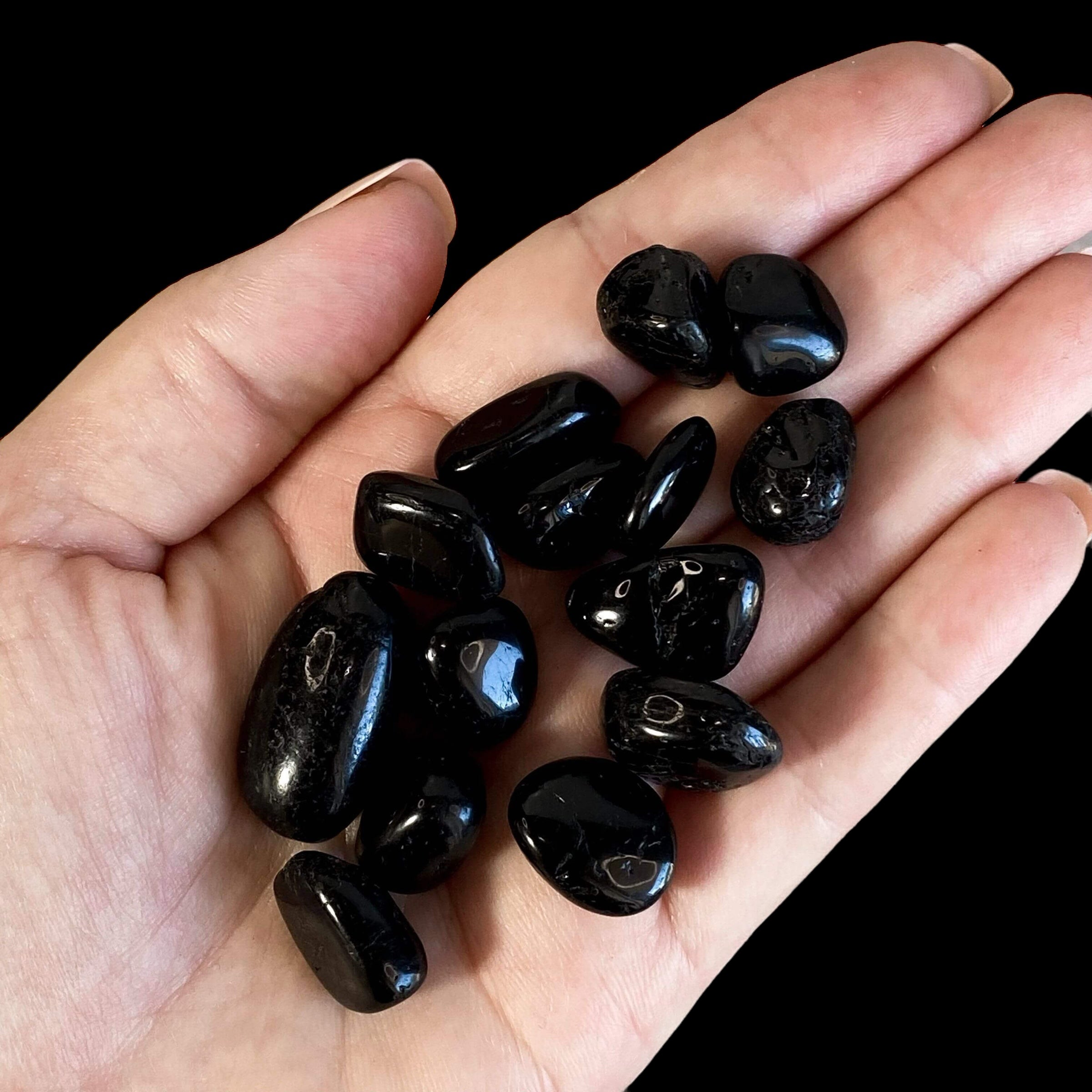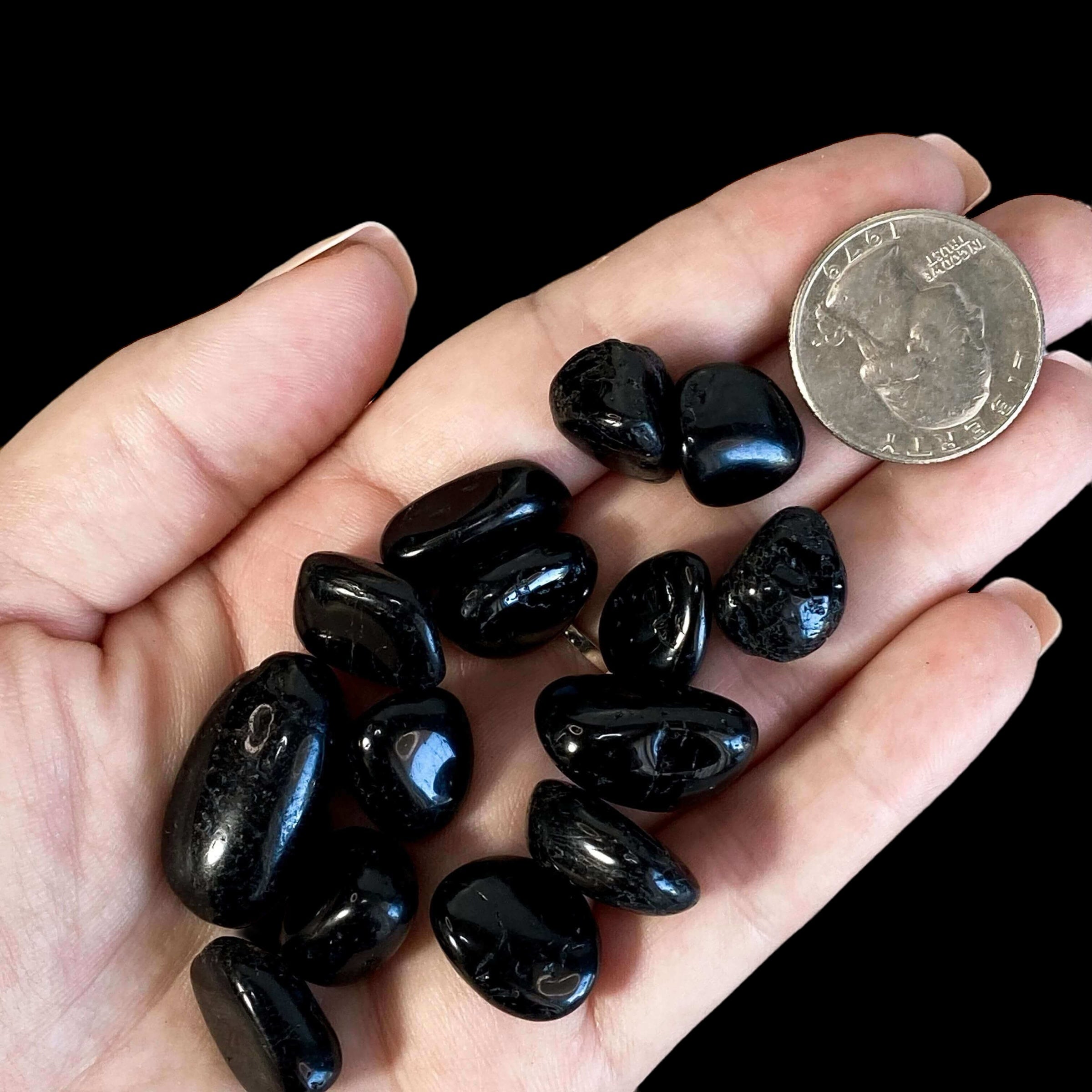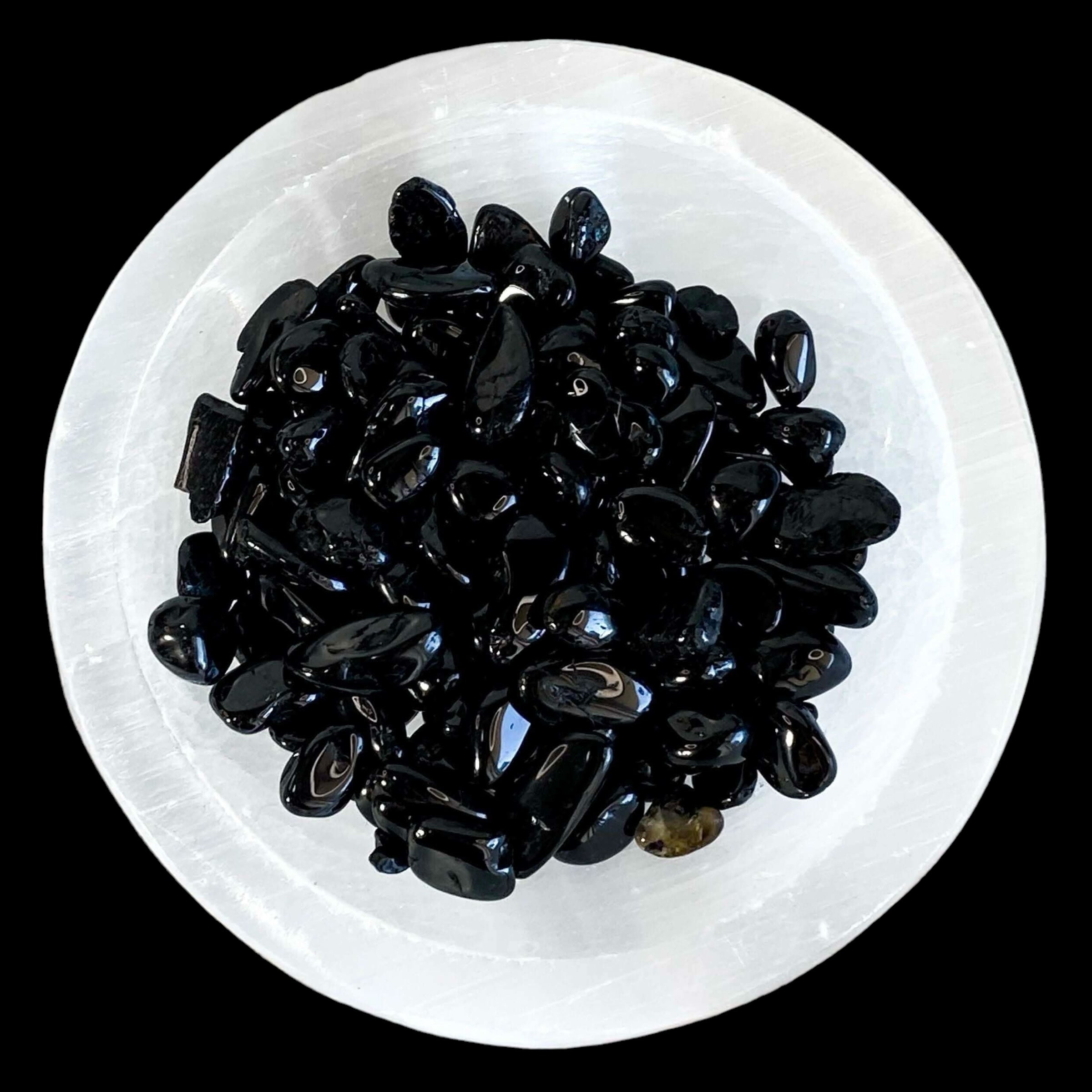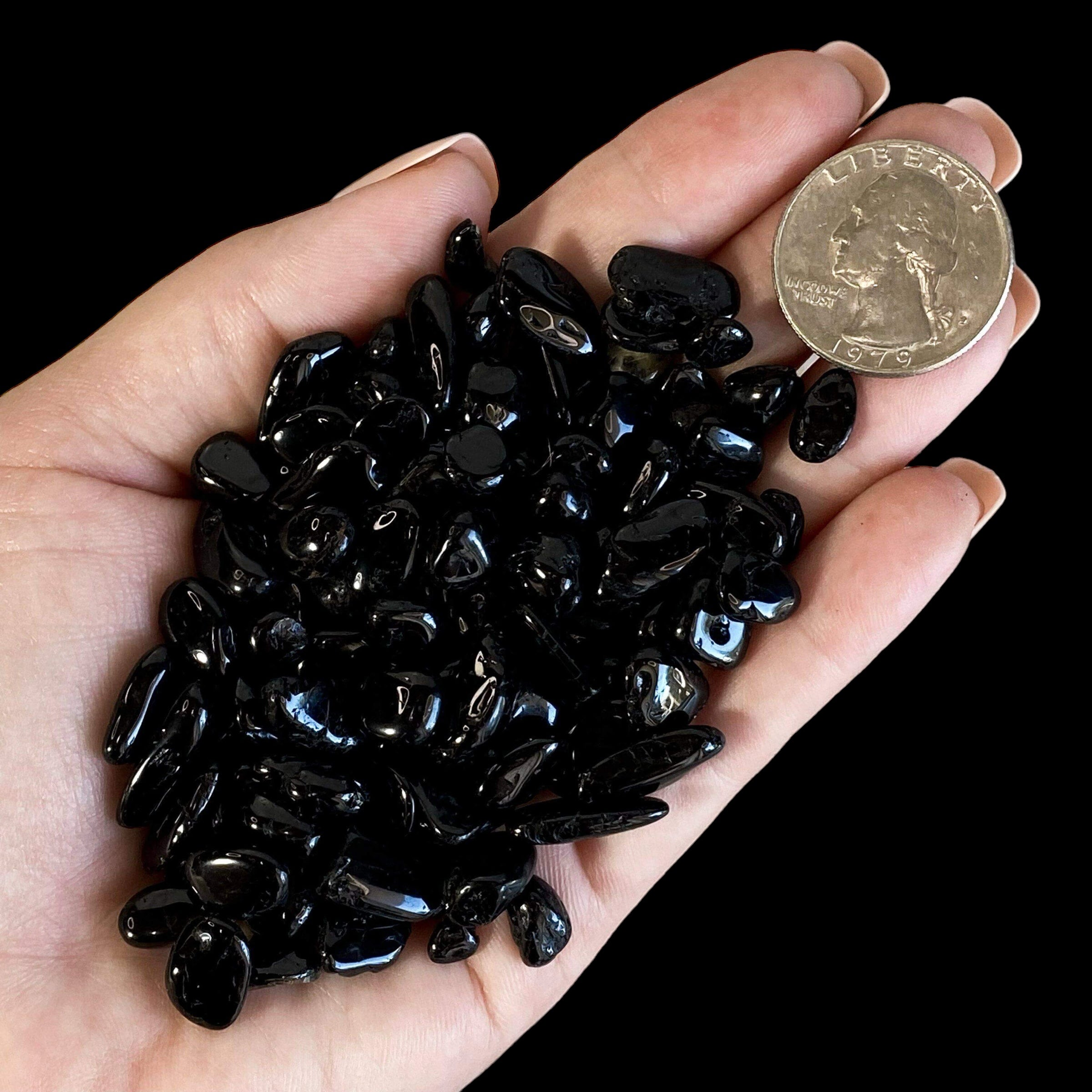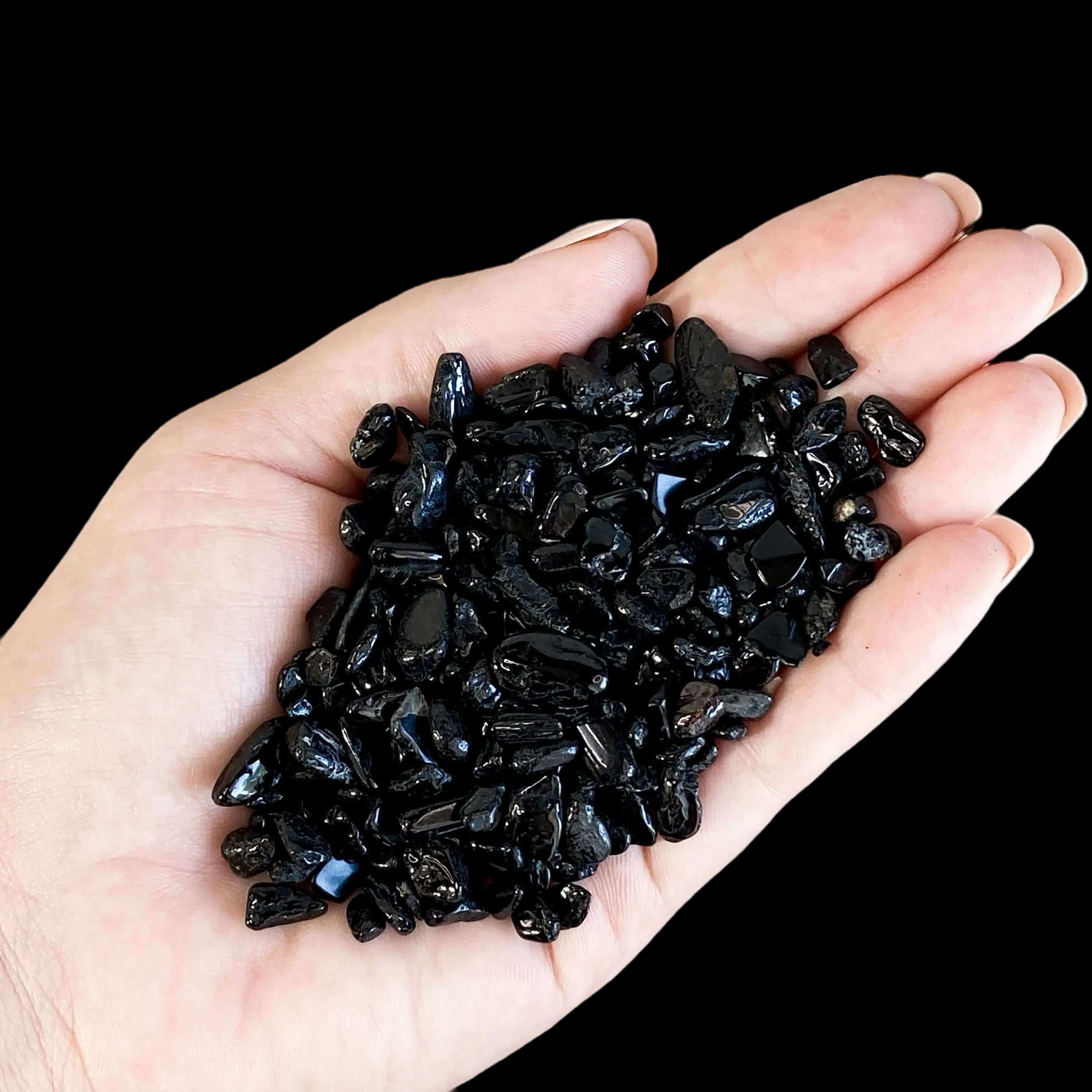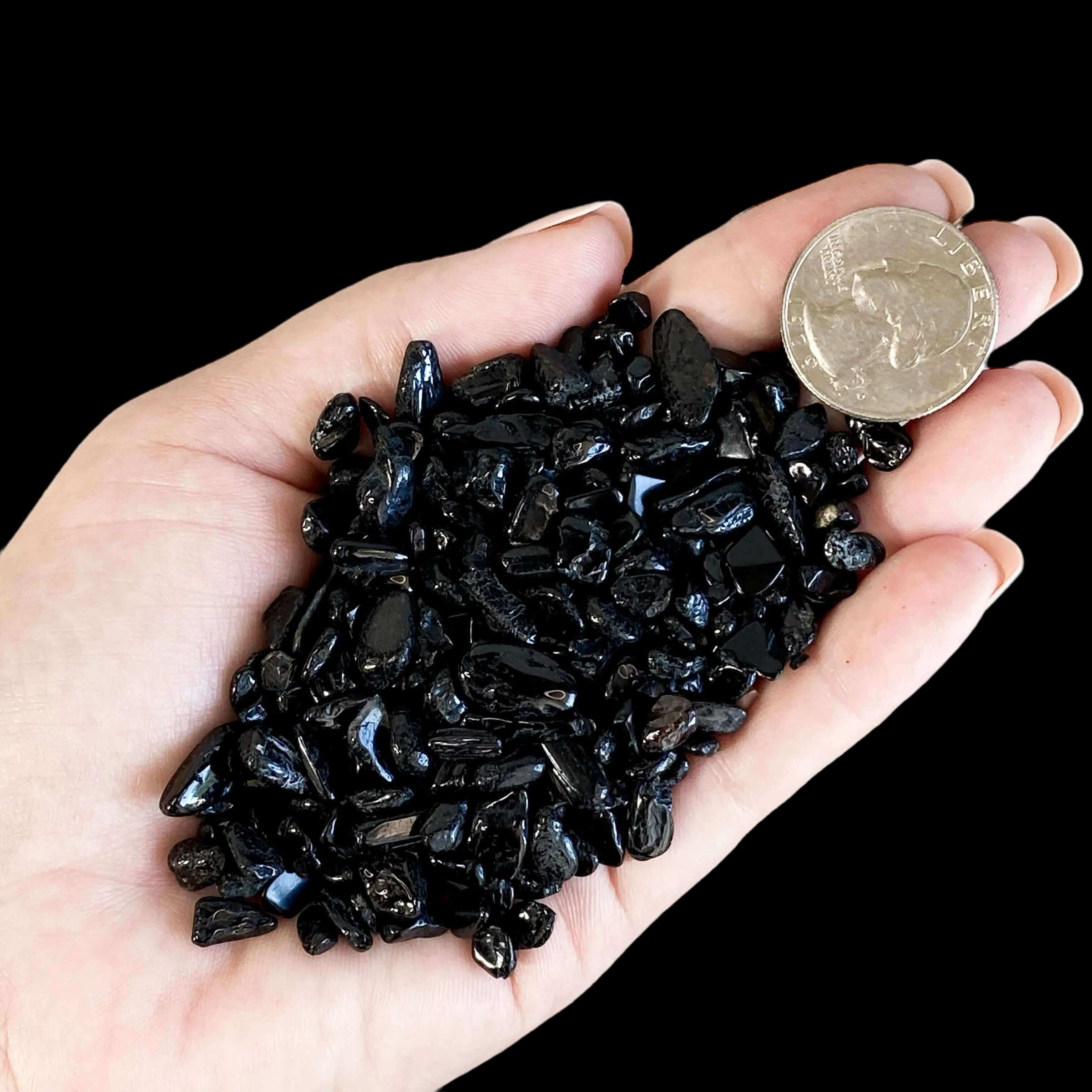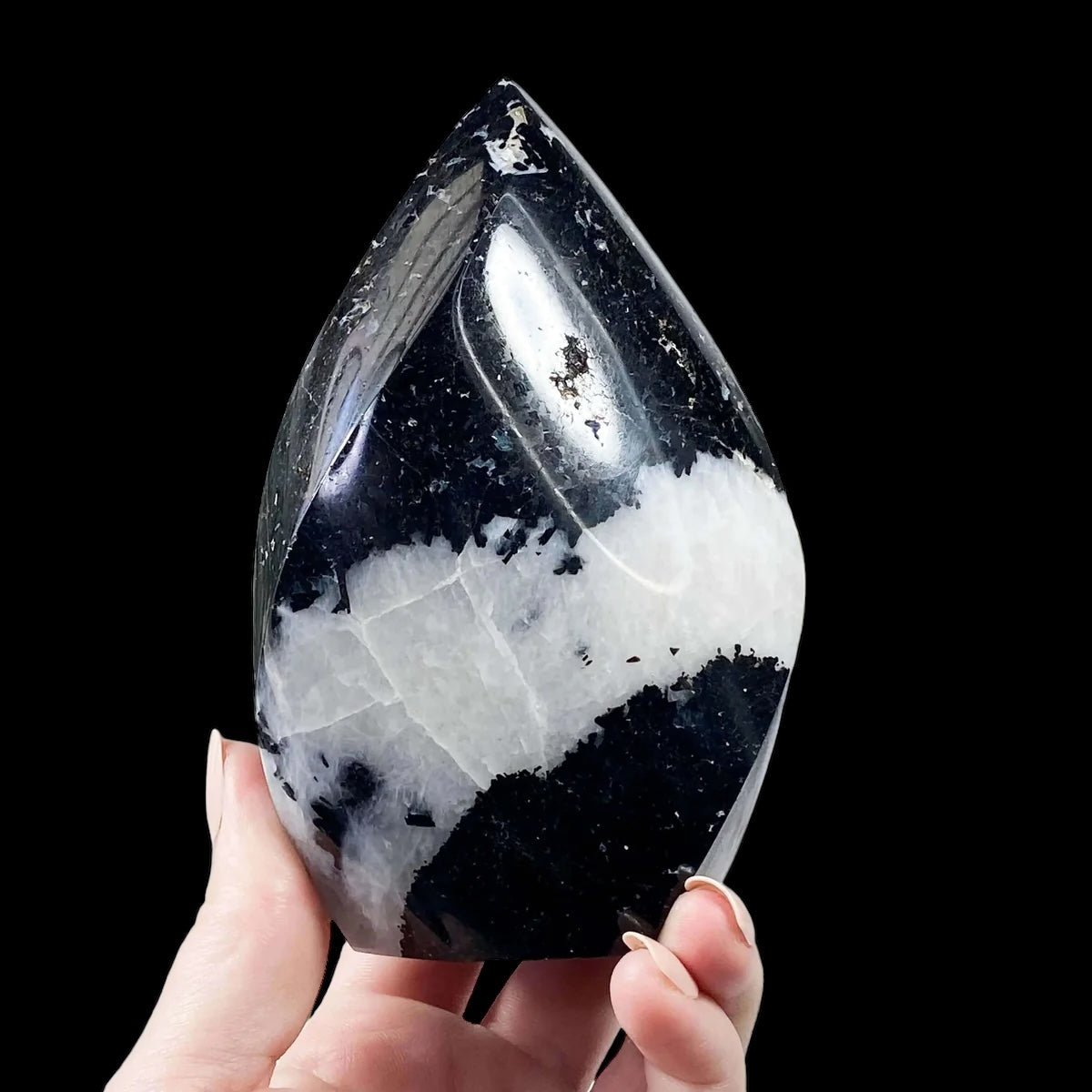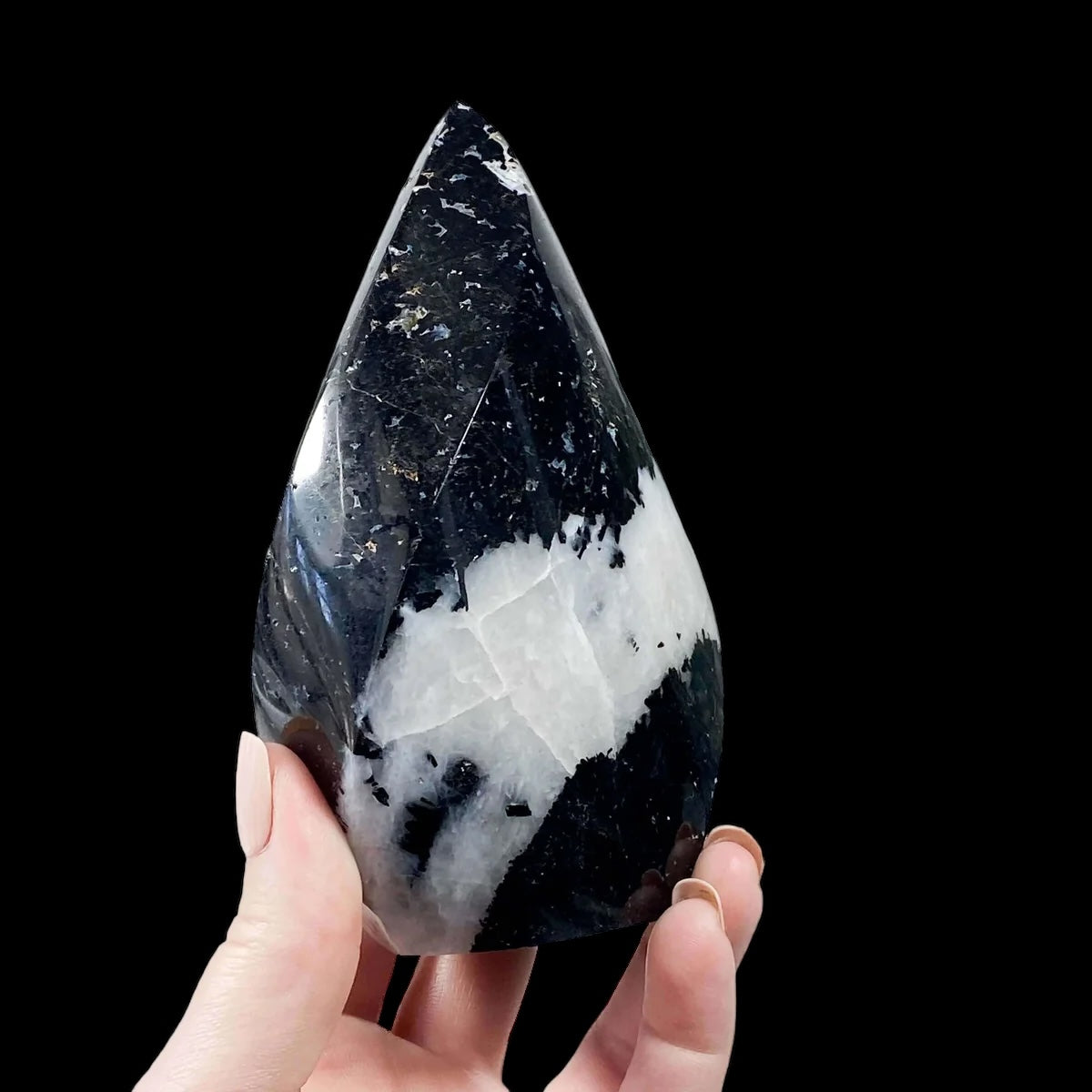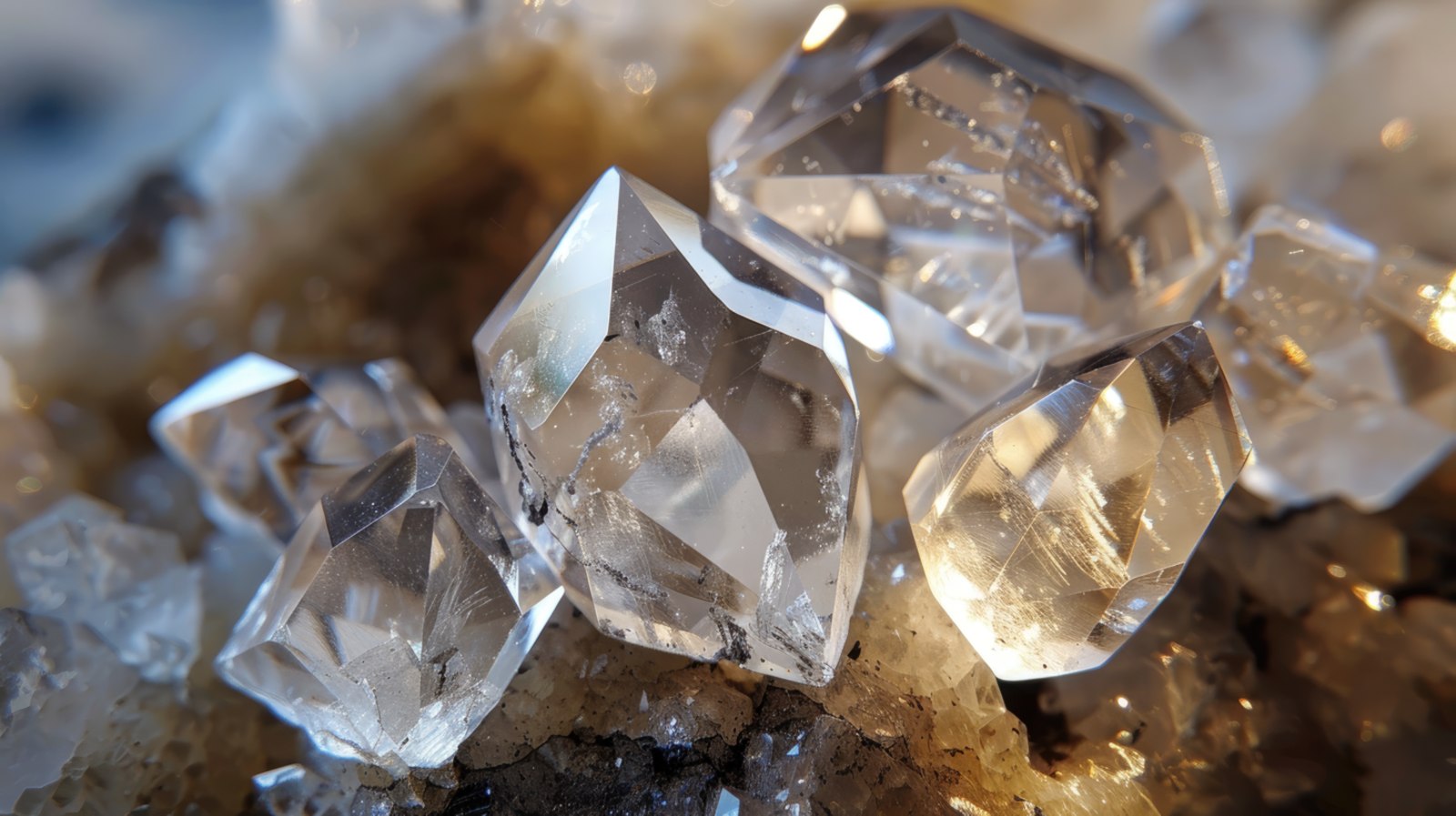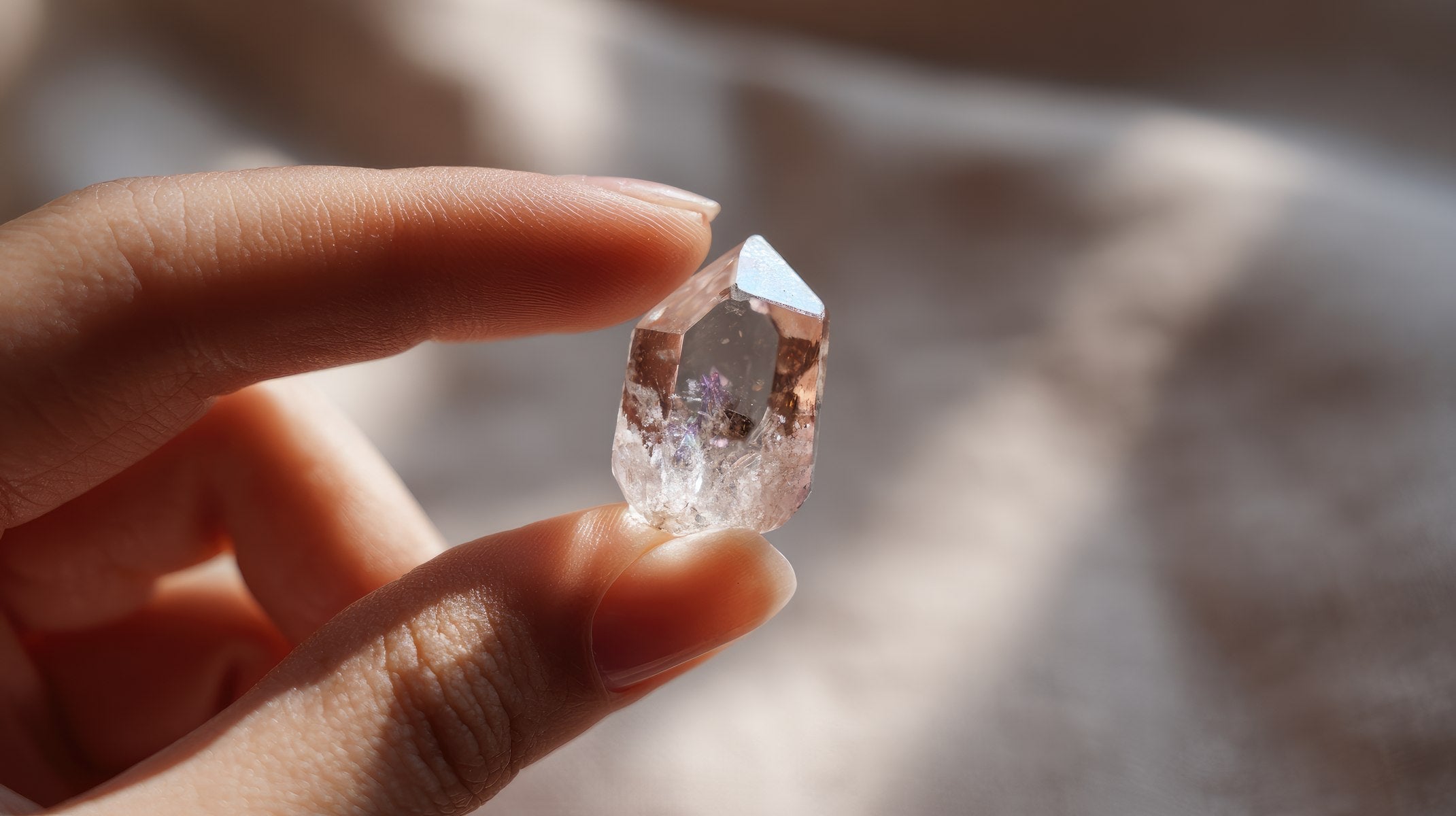
Black Tourmaline Properties
Exploring the Beauty of Black Tourmaline
Black tourmaline, a captivating gem, is a crystalline boron-silicate material enriched with elements such as aluminum, lithium, magnesium, sodium, potassium, and iron. Its name originated from "turmali," a term used in Sri Lanka to describe zircon. However, a fortuitous mix-up occurred when tourmalines were mistakenly placed in a box labeled for zircons, and the name stuck, gaining widespread acceptance.
Today, we have come to love and recognize this lustrous black stone as black tourmaline. It's a favorite in the metaphysical community and a must-have in every crystal lover's collection.
Understanding Black Tourmaline
While tourmaline occurs in various colors, such as watermelon tourmaline, our focus here is on black tourmaline, also known as Schorl.
One of the most noteworthy properties of this remarkable gem is its reputed ability to absorb electromagnetic radiation (EMFs. Read about our blog on crystals for EMF protection here). If you find yourself concerned about the potential effects of excessive phone or computer usage and exposure to electromagnetic frequencies, consider placing a piece of black tourmaline near your electronic devices.
Black tourmaline is primarily mined in Pakistan, Africa, the USA, Brazil, and Australia. It can also be found in other locations, including Madagascar.
History and Uses of Black Tourmaline
Throughout history, tourmaline has been utilized in amulets to symbolize the night and autumn. In various shamanic tribes worldwide, including those in America, Africa, and Australia, tourmaline was believed to possess healing properties and offer protection from various forms of physical harm. In Africa, it was regarded as a stone that fostered spiritual awakening.
Tourmalines were also renowned in Mediterranean and Asian countries. An Egyptian legend suggests that tourmaline acquired its colors from the rainbow. Romans are said to have used tourmaline to induce calmness, aid in sleep, and encourage relaxation. In India, a sculpture of Alexander the Great was even carved from tourmaline.
Tourmaline has also found industrial applications. The employees of the Dutch East India Company, which imported tourmaline from Sri Lanka, referred to pieces of black tourmaline as "ash pullers" due to their ability to attract and repel ash. As a result, these stones were often employed to clean Meerschaum pipes.
Within the New Age spiritual movement, some lore speculates that tourmaline is an extraterrestrial material sent to Earth to assist individuals in transitioning into the Aquarian Age. Other groups believe that tourmaline wands were crafted in the Andes of South America and possess an inherent magnetism that attracts their owners, guiding them on their spiritual journey. Regardless of the truth in these, it is easy to understand why black tourmaline remains a subject of fascination and myth for many.
Energetic and Metaphysical Properties of Black Tourmaline
Black tourmaline is said to purify one's energy, eliminating negativity and stagnation. As a stone associated with the element of water, it cleanses and revitalizes one's inner strength, comparable to the energetic properties of obsidian.
While black tourmaline is most commonly associated with the Earth Star chakra and the Root chakra, it offers a multitude of properties beyond balancing these energy centers. It is believed to safeguard against psychic attacks and transmute negativity into positivity.
Additionally, it is said to aid in alleviating anxiety, nervousness, and repetitive thoughts, assisting in breaking the cycle of fear-driven thinking and preventing compulsive behavior.
Black tourmaline is considered beneficial for individuals in need of rest, self-reflection, prayer, or meditation. It is also regarded as a stone of new beginnings
Black Tourmaline Associations
Astrological: Capricorn
Chakra: Root
Elemental: Water
Keywords: Grounding, Protective, Earth Connection





